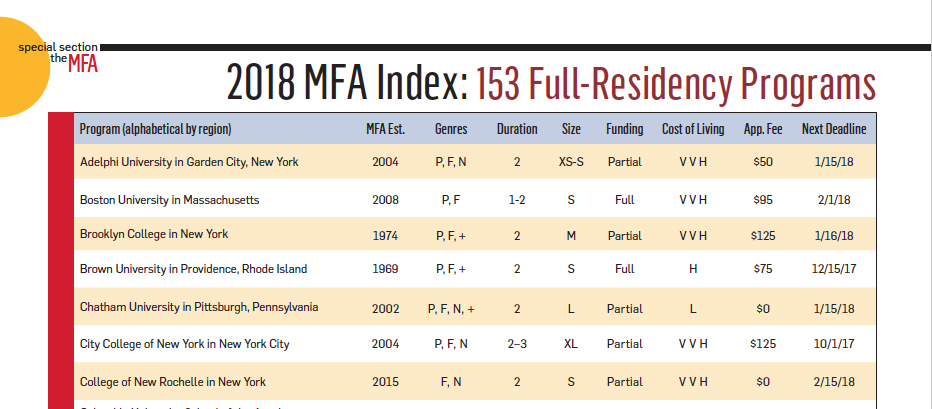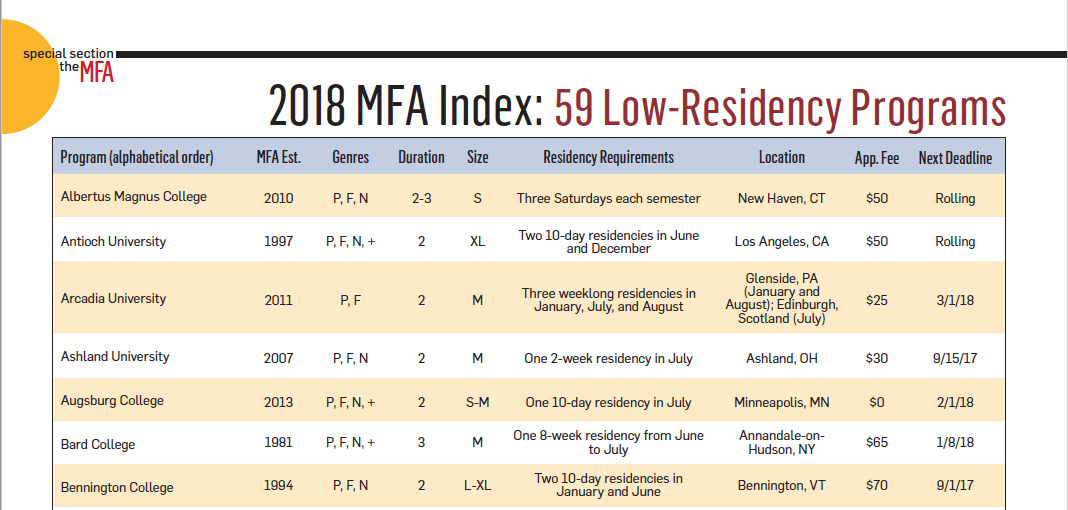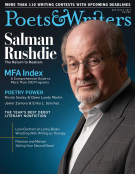If you’ve weighed the costs and benefits, considered the pros and cons, and finally arrived at the conclusion that, yes, you want to pursue an MFA degree, your homework has only just begun. Now that you know you want to attend an MFA program, you are faced with another set of decisions: To which programs (among the more than 200 that are currently offered by colleges and universities around the world) do you want to apply?
The MFA Index is intended as a place to start, a reference to help you begin narrowing down your choices. The programs listed in the following pages are pulled from the free MFA Programs database at pw.org, which includes the information presented in the as well as important details such as core faculty and specific funding opportunities. There are, of course, certain elements of any given program that might make it the perfect (or, conversely, a less-than-ideal) place for you as a person and as a writer. The MFA Index offers enough information about the genre tracks, location, size, amount of available funding, cost of living, and residency requirements for you to determine whether you want to do additional research on a program, gathering the details that matter the most to you. Once you’ve identified a program or several programs in the MFA Index that you think are worth a closer look, investigate them further using the MFA Programs database, then visit each program’s website, requesting more information from program coordinators and directors, if necessary.
The level of funding a program offers is of particular interest to many prospective students, and rightly so. The MFA Index lists the level of financial support students receive toward their tuition (full or partial), including tuition waivers, fellowships, scholarships, and/or teaching assistantships, research assistantships, and graduate assistantships. Many programs cannot guarantee full funding for all students, as funding often depends on university budgets that change unpredictably each year. If a program has funded all or nearly all of its students for the past several years, it is listed in the MFA Index as offering “Full” funding. “Partial” funding can mean as little as “one student receives a small scholarship” to “80 percent of students receive full funding.” When programs are not fully funded, it is important to calculate the cost of tuition. One program’s tuition might be so high that even if all students are offered a partial tuition waiver, it would cost those students less to attend a program that has fewer funding opportunities. Further research will bear out these details and comparisons.
Deciding to pursue an MFA is a big decision. Choosing which programs you will apply to is an even bigger one. Use the MFA Index (Full-Residency and Low-Residency) to consider the full field of programs, then narrow down your choices. Take your time. Do the research. We wish you the best of luck.










